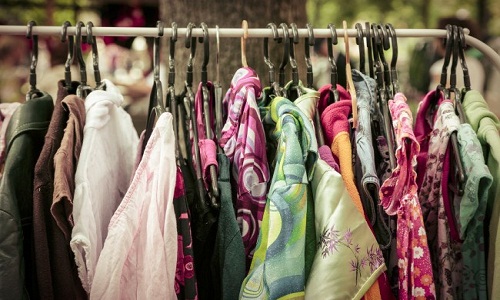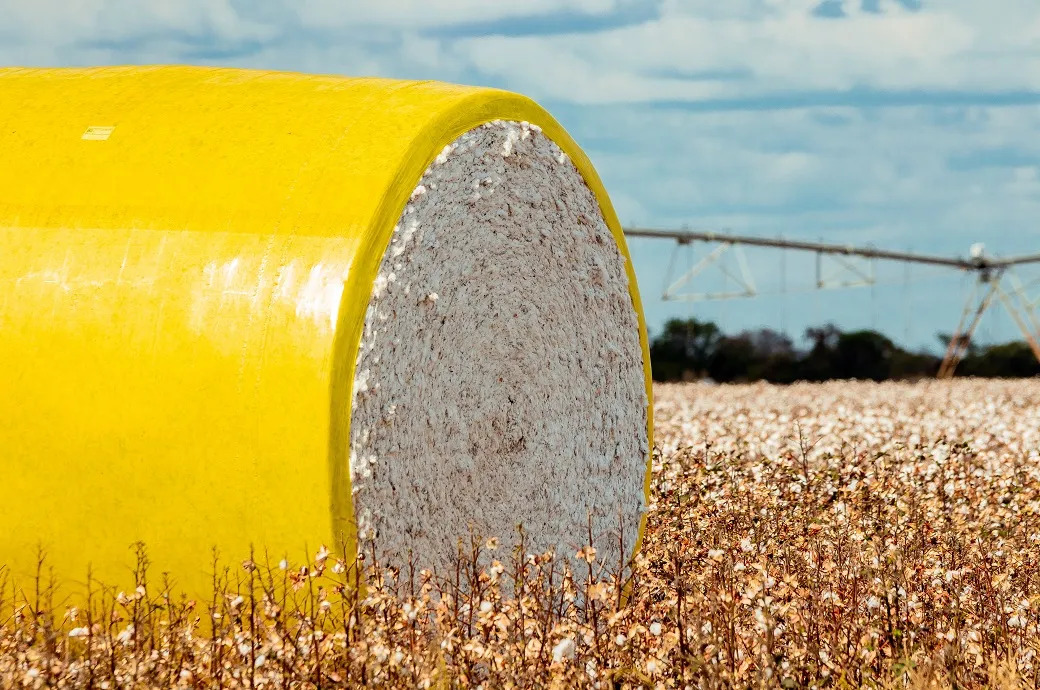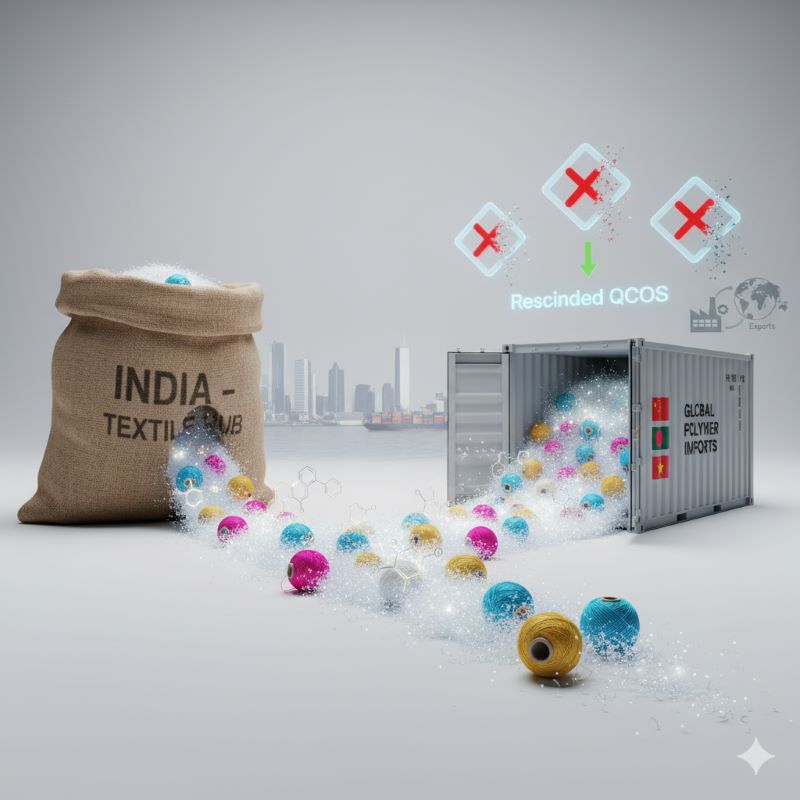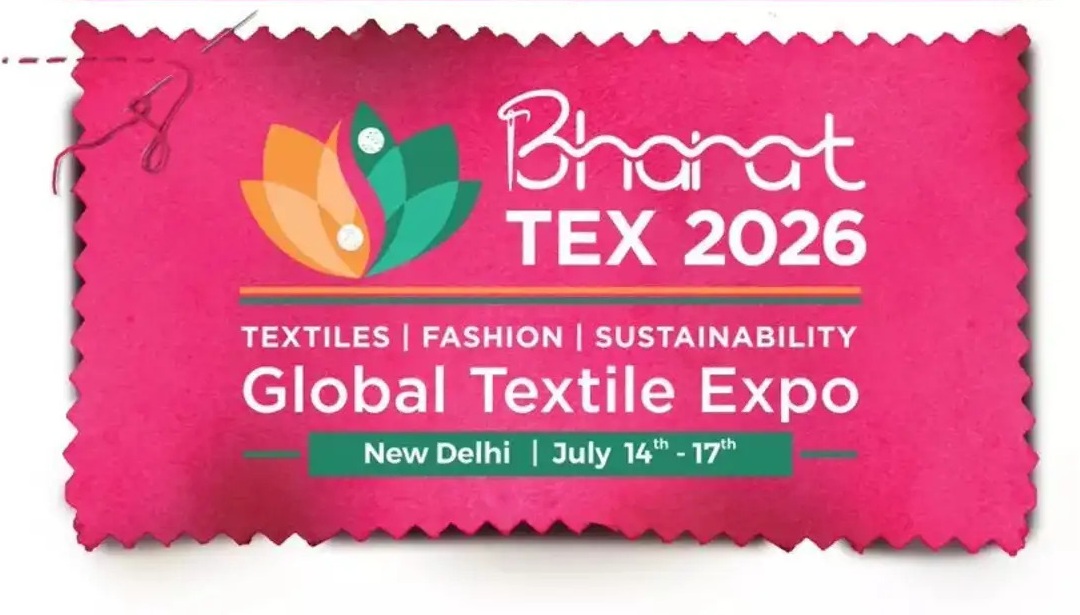FW
After holding its national convention and appointing its representatives on December 17, the Textile and Apparel Federation (FTTH) of Tunisia has worked out its roadmap. This organisation launched in May 2017 from a split of the textile industry of the Tunisian Union of Industry, Commerce and Handicrafts (Utica), the main organization of Tunisian employers.
The country’s textile industry leaders felt that Utica's wage increases were important and faced difficulties in ensuring that interests of textile manufacturers were heard. Thus FTTHs structure was different from that of Utica. Following the establishment of nine regional councils and small businesses and services ancillary to the textile industry, this new structure ensured the balance of representatives of the different sectors, including spinning or weaving.
Nafaa Ennaifer, TFCE Group Managing Director and Vice President of FTTH reveals, "This will bring out new faces, a new language for another dynamic in the sector." Ennaifer claims that over 500 members “gathered around common values" and represented around "45,000 jobs". FTTH has a charter which exposes the transparency of its activities.
The option displayed is a repositioning in terms of markets and products, combined with a national strategy to enhance productivity and monitoring the 23 textile support measures announced by the Government in June 2017. The FTTH is also a sustainability focused and wants to establish a principle of "co-responsibility" with the UGTT central workers to ensure the sustainability of companies. Its third objective is to rebuild the image of the textile segment that was affected by turbulence since the 2011 revolution. FTTH calls for a more competitive sector with real know-how, where companies are "dynamic and citizens" able to set the course for other industries to follow.
The establishment of this new Federation is in a context of rebound for the sector, thanks to increased competitiveness and the European willingness to rebalance trade with China and Turkey. Textile is the country’s second largest exports accounting for over 20 per cent of Tunisian GDP with 1,600 companies, 1,60,000 jobs and 2.2 billion euros in turnover for export of which 96 per cent goes to Europe. This data thus reveal the strategic importance of textiles in the Tunisian economy.
Gar-Tex will be held in Myanmar from March 28 to 30, 2018. This is an event on the textile and garment industry. The show will provide new business cooperation, networking, and potential market entry. It is a comprehensive platform for international brands to introduce themselves to the Myanmar textile and garment industry market, providing businesses and trade development opportunities for enterprises participating in the exhibition, creating a platform that brings domestic and international enterprises in the textile and garment related industries together for business cooperation, exchanging information, as well as catching up on the new and advanced technology and products from around the world such as Germany, Italy, Pakistan, Switzerland, Korea, Malaysia, Vietnam, Thailand, China, Taiwan, Indonesia, Japan, India, and Myanmar.
The show also includes attractive seminars about the growth of the industry, support for international investors, policy on the textile and garment industry, the current situation and future opportunities in the textile and garment sector as well as how to start a business in Myanmar.
Foreign direct investment in Myanmar’s garment industry has been significant. European and Asian countries are increasingly placing orders for Myanmar garments. Currently, Japan and European countries are placing the largest orders for garment shipments. Additionally garment exports also go to South Korea, China and America.
Donna Ida has introduced Isko stretch fabric into 15 denim styles for their S/S’18 collection. The fabrics are enhanced by a patented technology that increases their recovery level and makes it possible for jeans to hold their shape no matter how much one wears them. This innovative textile formula will be included in core Donna Ida styles and new shapes from December 2017.
Isko Reform HP (Holding Power) denim uses Isko™ Recall patented technology paired with a unique construction which ensures incredible hold to the body, creating a slimmer silhouette and a more streamlined look. It has incredible elasticity which makes this fabric extremely comfortable to wear. The styles include Kitty Kat in fawcett blue with a released hem; Rizzo the ankle skinny in fawcett blue; Carmen Frill Raw Hem Jeans in carnival; Sadie the Boiler Suit in fawcett blue; Wednesday in golden slumbers and Lila in forget me knot.
Isko Blue Skin patented concept has a pure indigo shade inspired by the rich, supersaturated Japanese indigos; deep but bright cast with a beautiful chip off/contrast effect, its refined brightness makes this pure indigo exceptional. This fabric will form the basis of Lila in big starry skies, Rizzo in big skies, Lois in deep big skies with Noir Velvet Lace Up, Minnie Patch Pocket Wide Leg in feeling blue and Ivy the Skinny in singing the blues. This fabric ensures freedom of movement with holding power in all directions. Gravity defying lift and hold including elasticity and 3D shaping feature.
Isko patented denim technology, Isko Recall, ensures jeans never bag out thanks to a superior recovery level. Styles include Sidney the Cropped Straight in cornbury blues, Boy Dazzler in Cosmic Girl High Top Jeans and Mae Pieced Skinny in silhouette blues.
Isko Pop fabric features patented technology which offers permanent softness and bright hues giving a sophisticated sheen to your jeans. Styles include Wednesday in golden slumbers, Lila in forget me knot, Sadie the Boiler Suit in fawcett blue, Mae Pieced Skinny in silhouette blues, Boy Dazzler in Cosmic Girl High Top Jeans, Carmen Frill Raw Hem Jeans in carnival, Rizzo and Kitty Kat in fawcett blue. Featured in Donna Ida’s Sidney the Cropped Straight, Isko PJ Soft is a smooth, supple stretch fabric that offers the 24-hour comfort of pyjamas which is extra-soft and light. Supported by Modal fibres, this fabric moulds and forms with every movement of the body, giving an excellent silhouette and fit for a comfortable look that never constricts.
For the first nine months of 2017, Inditex’s sales increased 10 per cent. Gross profits were nine per cent higher than last year. Span-based retail giant Inditex is the owner of Zara. The company operates with a special kind of business model. Every division commits initially to a small quantity for fashion merchandise and then replenishes it in response to customer demands and preferences. This merchandising strategy enables stores to feature new and different products very quickly. Zara, for instance, can deliver a new garment as quickly as 15 days – from design to store shelves in Spain and nearby countries. Delivery to the US takes just a few days longer. That generates an excitement for customers that keeps them coming back.
Zara, a retail brand with fashion for women and men, has 2, 266 stores and is the best-known division of Inditex. Other major divisions include Pull & Bear that offer casual clothes and accessories for young people, Massimo Dutti that features high end clothing for men and women, Bershka that has urban styles, Stradivarius with casual, young fashion for women, Oysho that features lingerie, Zara Home for home goods and Uterque for accessories.
Inditex operates internet sales in 45 markets and is experimenting with a pick-up kiosk for in store self-service units.
Gap has reported its fourth consecutive quarter of higher same store sales. The near single minded focus Gap has placed on the Old Navy brand looks to be paying off. Gap expects Old Navy to reach $10 billion in sales over the next few years and it remains the largest contributor of revenue to Gap. The brand has made a concerted effort to downplay both the Gap brand and its upscale Banana Republic in favor of the more down-market Old Navy and to a lesser degree its women’s athletic clothing brand, Athleta, as it tries to capture continued interest in the athleisure space.
Sales of denim jeans for women surged 79 per cent over the first six months of 2017 compared to the year-ago period, so Gap could be getting some of the tailwind from the trend. Old Navy is the fourth largest denim retailer.
Gap has nearly 600 stores. It seems to have been saved by adopting a focus on its discount chain, which continues to resonate with shoppers, still visiting bricks-and-mortar stores, and also catching a boost from changing consumer tastes. It's also benefiting from having been down for so many years, that any upward movement gets magnified.
Brexit could be a sort of blessing in disguise for the British textile industry. The exit of UK from the European Union has resulted in a depreciation of the value of the sterling. This in turn has rendered UK’s textile and garment exports much more competitive for the export market. In wake of this situation, textile retailers from UK are eager to source more of their raw material requirements from local markets. Another factor that has led to this change in sourcing pattern is that with the fall in the value of sterling imports have turned more expensive.
The accentuating factor for the trend is the depreciated value of the sterling. The trend is more encouraging for domestic markets as the UK has not signed any free trade agreements with the EU. This will imply that EU countries will not be able to dump their goods in the UK market at cheaper prices. Customs duties would pose a stiff barrier and UK’s domestic markets will be subject to less competition from imports. On the flip side, the UK has also to circumvent the problems posed by the denial of access to a single EU market.
"Fashion retailing and manufacturing has takein a tragic turn over the years. Statistics reveal, today, about 80 billion new pieces of clothing are made each year, which is around 400 per cent higher than what it used to produce 20 years back while the global population only grew about 30 per cent. A new report from the Ellen MacArthur Foundation says cumulatively around the world a truckload of clothes get dumped every second. The average American throws about 82 pounds of textiles a year, much of which ends up in landfills or incinerated."

Fashion retailing and manufacturing has takein a tragic turn over the years. Statistics reveal, today, about 80 billion new pieces of clothing are made each year, which is around 400 per cent higher than what it used to produce 20 years back while the global population only grew about 30 per cent. A new report from the Ellen MacArthur Foundation says cumulatively around the world a truckload of clothes get dumped every second. The average American throws about 82 pounds of textiles a year, much of which ends up in landfills or incinerated. Of the clothing that reaches second-hand stores like Goodwill—only 15 per cent of all discards—some is recycled into shoddy (filling for cheap furniture) or upcycled into things like denim insulation, but most of it is shipped to poorer countries. However, they too have limits—African countries including South Africa and Nigeria recently banned Western castoffs, which have overwhelmed their markets, causing the decline of their local fashion business. Is it possible to retrofit a $1.2 trillion industry? Here are three revolutionary fabrics greening the industry.
Biopolymers in place of old fabrics

Two types of textiles, petroleum-made polyester and field-grown cotton, often woven together, have been the most preferred fabrics for decades. Ramani Narayan, Professor, Department of Chemical Engineering and Materials Science, Michigan State University, states much of what we wear now is a blend of PET, a petroleum-based fibre, and cotton fibre. But these fabrics have their issues. Cotton, which makes over 30 per cent of our clothes’ yarns, is a natural material, but it consumes huge amount of water and even accounts for almost 20 per cent of pesticides and 25 per cent of the insecticides used in agriculture worldwide, before it’s even picked. The production of polyester, the demand for which has doubled in the last 15 years, is an energy intensive process that requires a lot of oil and generates harmful emissions, including volatile organic compounds, particulate matter, and acid gases, like hydrogen chloride, all of which contribute to respiratory disease. Adding PET to a textile gives better performance, it makes fabrics more moisture-resistant and gives them more washability. But they aren’t bio-degradable. Unless PET threads are decoupled from cotton and recycled, they don’t decompose, but separating fibres is extremely challenging. Towards this end, biopolymers are macromolecules—long chains of smaller molecular units strung together. These basic units can be amino acids, nucleotides, and monosaccharaides. The most common biopolymer is cellulose, which makes up one third of all plant material on earth. Cotton is 90 per cent cellulose, but there are other, less polluting alternatives.
Biopolymers can be grown or harvested from other plants like kelp or from living organisms like bacteria or yeast, which produce biopolymers as part of their lifecycle. The resulting fibres can be woven into a variety of textiles akin to polyester, leather, or a cellulose-like yarn. To a certain extent, these materials can sequester carbon from the atmosphere, acting as wearable carbon sinks. And when they are thrown away, these biopolymers will decompose. According to Narayan, using biopolymers in clothing can reduce energy and freshwater use and reduce climate change resources.
Sea to the rescue with Algiknit,
AlgiKnit uses kelp, a type of seaweed, to produce a biopolymer called alginate, which is then used for textile production. Kelp grows all over the world, forming offshore kelp forests. Some kelp species grow quicker than the fastest-growing terrestrial plant, bamboo, and are inexpensive to farm. As it sprouts, kelp cleans water too—absorbing phosphorous, nitrogen, and five times more carbon dioxide than land plants—so farming it near seaside cities can improve polluted local waters. Tessa Callaghan, co-founder, AlgiKnit, stated that the team’s big challenge has been to get their end fibre to be strong and flexible enough for use on an industrial knitting machine. It took a lot of experimentation to ensure compatibility between yarns and machines, but one of the team’s goals is to be able to use the yarn in the existing fibre and textile infrastructure, to streamline the new material’s acceptance.
Leather from yeast
Modern Meadow’s yeast-produced collagen is another biopolymer that is about to make its runway debut in a form of a leather product named Zoa. The New Jersey-based company designs DNA that can yield collagen, the protein that makes up leather. Susan Schofer, VP – business development, Modern Meadow, informed the company designs DNA that can make collagen, the main building block of leather, then purify it, and then use an assembly process to turn it into leather. Compared to traditional leather industries, Zoa’s production has a lower environmental impact and more fashion design opportunities. Modern Meadow will be introducing Zoa to market in 2018.
Sequester Methane
California startup Mango Materials makes its fabrics by feeding wastewater methane to methanotrophic bacteria that eat it and produce PHA-based polyester that can be woven into threads or molded into various shapes. Unlike the oil-based PET fabrics, PHA threads are biodegradable. Anne Schauer-Gimenez, VP – customer engagement, Mango Materials, highlighted since methane is a greenhouse gas 30 times more potent than carbon dioxide, clothing made from Mango Materials’ fabrics has the potential to mitigate global warming, if used on a larger scale. When Mango Materials makes its polyester fabrics, the methane is essentially sequestered from the atmosphere, for as long as the clothes remain intact.
Turkey wants to improve its existing strong trade and economic relations with Bangladesh by singing an FTA. The countries will consolidate cooperation in key areas such as trade and investment, defense, education, tourism and connectivity. They are improving economic and trade relations. Bangladesh wants Turkey to withdraw the 17 per cent and 19 per cent additional duty imposed on Bangladeshi readymade garment and ceramic products.
Bangladesh has been having nearly seven per cent growth over the past few years. It has sought Turkish investment in special economic zones. On many international issues both Bangladesh and Turkey hold similar positions. They have signed two bilateral documents to enhance cooperation in the areas of small and medium enterprises and maintain the standards of products. This will cover areas such as small and medium enterprises, industrial production, standardisation, capacity building, knowledge sharing, and skill development.
Bangladesh and Turkey have also reiterated their commitment to work closely and support each other on bilateral and international issues of mutual concern, including the issue of forcibly displaced Rohingya people from Myanmar.
As per WTO World Trade Statistical Review 2017, the ratio of international trade growth to GDP growth fell to 0.6, indicating the worst year since 2001, and growth was just 1.3 per cent in terms of volume; the weakest growth rate since 2008. Euratex, the European Apparel and Textile Confederation, notes that in spite of a bright EU economy, textiles and clothing activity in the EU lost its earlier momentum, in particular towards the end of the year.
As per the latest bulletin released by the Textile Confederation, textiles and clothing moved in opposite directions: Textile activity improved to some extent, while movement in the clothing industry showed no signs of recovery. Last year witnessed the slowest growth in EU exports since the financial crisis, while the retail turnover was less dynamic — recording a modest growth — when compared to the previous year Despite political issues, overall situation in the EU and OECD countries continued to improve. The EUs economic improvement did not benefit the clothing sector, whilst the textiles sector moved marginally ahead by just 1.6 per cent. Production prices again fell across the EU as a whole, with an overall reduction of 1.1 per cent. The only exception was in the UK, where output prices went up. However, this recorded a lesser decline when compared to 2015.
Euratex reports, “Employment in the EU for both textiles and clothing sectors remained almost stable in 2016. Taking into account the need to increase productivity to contend with global competition, as well as consumer confidence that only appeared late in the year, we could definitely view this general trend as a real sign of resilience. The textiles sector was in a more robust position, enabling it to boost employment, whereas the clothing sector again declined.”
Preliminary data for Q1 of 2017 was also favourable for the textile sector, despite a decline in spinning and weaving and nonwovens, whilst finishing has recovered somewhat. Knitted items (circular knitting) continued to grow, but at a reduced pace. Other textiles, including technical textiles, expanded more sustainably where growth was seen mainly came from the Eastern European countries. The clothing sector continued to reduce production, yet turnover rose marginally. Managers’ expectations during the second half of 2017 continued to rise with positive assessments of production enhancement.
The Sri Lankan’s handloom sector is ‘seeing good days’ following many governmental initiatives to revive the sector. Many Lankan handloom makers are reaping good profits, says the minister of industry and commerce Rishad Bathiudeen. The handloom sector in Sri Lanka faced a slow decline since 1990s, and the government initiated several measures to successfully revived the sector.
The Minister said currently, all handloom products made in Sri Lanka are selling at a quick pace and despite this, the sector is unable to meet the growing demand. Most sales are from domestic buyers and the remaining revenue comes from sale to tourists. Most Lankan handloom makers are in the East. Among other leading provinces for handlooms are Central and Southern parts. The government plans to improve the country’s handloom sector and his Ministry strives towards promoting this sector and also supports handloom makers.
The Minister further pointed out that 70 per cent of handloom makers are women and therefore strengthening this sector is a way to empower rural women. This sector is also a contributor to government's self-employment creation plans.
Revealing the strategy, he said that the handlooms makers use high quality colourful yarn for their produce which are expensive. Therefore, the Ministry is working on a project to make low cost dyes for the handloom sector by establishing a handloom dye and colour centre using latest technology, in the North Central Province. The Minister was grateful to the Indian Institute of Handloom Technology in Salem for training about 35 Sri Lankan handloom craftsmen who were also introduced to new market trends.












